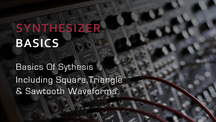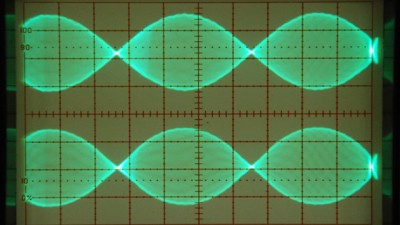These days we’re all spoiled for choice when it comes to the range of amazing pre-sets available to us from an abundant supply of synths. It’s a great thing, no doubt, but for many younger producers this has come with a cost. Unfortunately, many people have absolutely no idea how to even attempt to re-create the pre-sets they rely on.
Being no expert in synthesis myself, I’ve often marveled at the level of understanding that the early pioneers demonstrated in their ability to create lush and unique sounds from combinations of waveforms and effects.
This has naturally led me to want to understand more about the basics of synthesis so that I am more able to create my own sounds and feel confident tweaking pre-sets to suit my own needs.
If you are interested in getting a better grip of this, I encourage you to explore pre-sets and reverse-engineer them to see exactly how they were created. I often start by going to the effects section and turning off all of the effects applied to a pre-set. This will help you get back to the raw sounds.
Now you’re much closer to the basic blocks that create the pre-set, and fundamentally, regardless of what synth you are using, these are based on a single oscillator or a combination of oscillators from your synth generating waveforms. These waveforms form the building blocks of all your pre-set sounds.
Many synths these days include a huge array of waveforms that the oscillators can generate, but historically synths include a standard set of waveforms – Triangle Wave, Sawtooth Wave, Square Wave and Pulse Wave. Each of these has certain characteristics, so depending on the type of sound you after, you’d choose one or a combination of these.
Let’s look at their characteristics:
Triangle Wave – these are soft and contain odd harmonics. They don’t have much “bite”, mid-range or tops. It does have a top-end buzz and is perfect for adding weight.
Sawtooth Wave – this is the basis for many bright and cutting sounds. It contains both even and odd harmonics. It has a nice bite, buzz and brightness. It sounds solid enough to make bass and lead sounds.
Square Wave – Like the triangle wave it only has odd harmonics. It does have a more solid tone than the triangle wave, making it work for hollow and cutting bass sounds and leads.
Pulse Wave – this has a biting but “nasal” sound so is often suitable for thinner type basses and leads. It contains both odd and even harmonics. Evolving sounds can be created by varying the pulse width.
If you want to get a better understanding of how these are used practically, pick a pre-set, turn off all the effects and head over to the oscillator section of your synth. Turn off every oscillator but one (if the sound is using more than one oscillator) and start from there.
What type of sound is it? What type of waveform have they used? Play with the settings on this oscillator to see how it changes the sound. Once you’ve got a sense of that move on to another oscillator and turn that on. How do they sound together? Are the settings and waveform types the same or different?
Working this way on your favorite sounds, you’ll soon get a good sense of how sounds are made and you can start making your own versions, learning the basics and getting some unique sounds of your own as you go along.
Remember to turn off all the effects when going through the oscillator sections to get a more clear sense of exactly how each oscillator sounds.
















